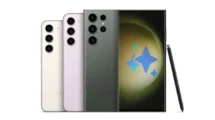India’s space exploration programme will gain some more momentum with the launch of ASTROSAT. The assemblage of the machine is complete and will be ready to kick off its journey on September 28th (Monday) at 10 am from Satish Dhawan Space Centre, SHAR.
ASTROSAT – India’s Hubble Telescope
In addition to ASTROSAT, the Indian Space and Research Organisation (ISRO) will be launching 6 other international satellites 4 from the US and 1 from Indonesia and Canada each.Isro’s most trusted rocket and workhorse launch vehicle PSLV-C30 will carry the satellite to place it into a 650-km orbit.
Upon reaching its destination, the astronomical satellite will conduct observations in the Ultraviolet (UV), low and high energy X-ray wavebands. Precisely, the mission envisages an Earth-orbiting scientific satellite with payloads capable of simultaneously observing the universe in three regions of electromagnetic spectrum –
- Visible
- Ultra-violet
- X-ray
The multi-wavelength observatory will also study distant stars, white dwarfs and pulsars. The satellite will also train its instruments at the super massive black hole believed to exist at the centre of our Milky Way galaxy.
Deviprasad Karnik, Director, Public Relations, Isro, reported,
All preparations for the launch is in progress. The Mission Readiness Review Committee meeting will be held on September 24 and would decide the countdown process of the vehicle”.
The ASTROSAT will carry with it instruments of various Indian research labs such as the Tata Institute of Fundamental Research (TIFR), the Indian Institute of Astrophysics (IIA), the Inter-University Centre for Astronomy and Astrophysics and the Raman Research Institute (RRI). Apart from this, 2 payloads have sensors from the University of Leicester, UK-Canadian Space Agency.
ASTROSAT is popularly being referred as India’s Hubble (US-European joint space observatory) by many. The latter was successful in discovering new galaxies. ASTROSAT happens to be fourth such satellite in space after Hubble, Japan’s Suzaku and Russia’s Spektr R.





Add Comment